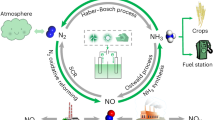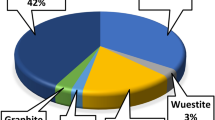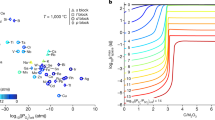Abstract
THE statement that a metal will always displace any other metal below it in the potential series from solutions of its salts is well known not to be true in practice. As an example, the standard way of reducing ferric to ferrous ions in acid solution by zinc ought to fail because, according to the statement, reduction should not stop at the ferrous stage, as it does, but continue to the metal, zinc standing much higher in the potential series than iron. In general it has been found that, provided the displacing metal is not passive, ions of metals of the B-subgroup of the periodic classification conform to the simple statement and those of the metals iron, cobalt, chromium, molybdenum, and other 'special-steel' metals do not. Thus zinc instantly reduces to metal the ions of cadmium, thallium and tin, but not those of chromium, iron, nickel, and cobalt, although chromium and iron are close to cadmium in the potential series, and nickel and cobalt lie below both thallium and cadmium. The accepted explanation of this anomaly which preserves a belief in the potential series of metals is that with these ions the expected reaction is retarded or inhibited by causes involving the phenomena of passivity, over-voltage or polarization. Experiments we have done seem to show, however, that the main cause of the anomaly lies in the existence of a protective ring of groupings around what is ordinarily regarded as the simple ion of a 'special-steel' metal.
This is a preview of subscription content, access via your institution
Access options
Subscribe to this journal
Receive 51 print issues and online access
$199.00 per year
only $3.90 per issue
Buy this article
- Purchase on Springer Link
- Instant access to full article PDF
Prices may be subject to local taxes which are calculated during checkout
Similar content being viewed by others
References
Donnan and Bassett, J. Chem. Soc., 81, 939 (1902).
Howell, J. Chem. Soc., 2039 (1927).
Groves and Russell, J. Chem. Soc., 2208 (1931).
Author information
Authors and Affiliations
Rights and permissions
About this article
Cite this article
RUSSELL, A., CARVER, J. Reduction of Ions of Nickel, Cobalt, Iron and other Metals by Zinc Amalgam. Nature 142, 210–211 (1938). https://doi.org/10.1038/142210a0
Published:
Issue Date:
DOI: https://doi.org/10.1038/142210a0
Comments
By submitting a comment you agree to abide by our Terms and Community Guidelines. If you find something abusive or that does not comply with our terms or guidelines please flag it as inappropriate.



